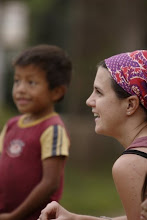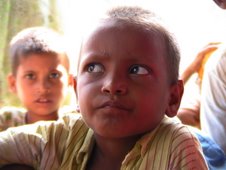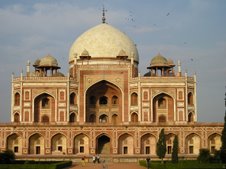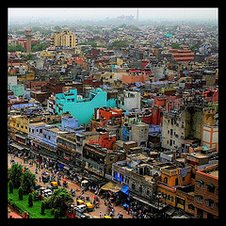 It is not a fast moving ambulance. But it gets the job done.
It is not a fast moving ambulance. But it gets the job done.In Bihar, Drishtee is piloting a project to bring proper healthcare to villages through a for-profit model. Using the ambulance as the roving office, we set up camps in different villages every day of the week. Under a plastic canopy, the doctor sees patients, completes basic tests (e.g. blood pressure) and writes prescriptions. The villagers pay about a dollar for immediate care.

Although Drishtee costs more than free government health care, villagers are wiling to pay to avoid traveling far and losing a day of work. There are also quality concerns at the government facilities; villagers may also have to wait or may not actually see a doctor. In fact, many folks end up using the local chemist (pharmacy) as their primary care physician. This often results in inaccurate diagnoses and inappropriate prescriptions.

There are challenges to this model. First, we have to continue to educate the customers about the importance of health care and encourage them to be proactive. Often, people wait until their condition becomes so insufferable that they need extreme (and expensive) treatment.
 Second, there are financial constraints. A patient may be able to afford the consultation but the prescription drugs are too expensive. We are trying to collaborate with local chemists but there are real trade-offs involved. Finally, there is an urgent need for health insurance. Ultimately, health is unpredictable and communities are better off if we can pool risk to protect individuals. But this requires convincing people who have very little money to spend it on an intangible product that does not feed or shelter them. Drishtee is also working on this but it is an uphill battle.
Second, there are financial constraints. A patient may be able to afford the consultation but the prescription drugs are too expensive. We are trying to collaborate with local chemists but there are real trade-offs involved. Finally, there is an urgent need for health insurance. Ultimately, health is unpredictable and communities are better off if we can pool risk to protect individuals. But this requires convincing people who have very little money to spend it on an intangible product that does not feed or shelter them. Drishtee is also working on this but it is an uphill battle.











No comments:
Post a Comment